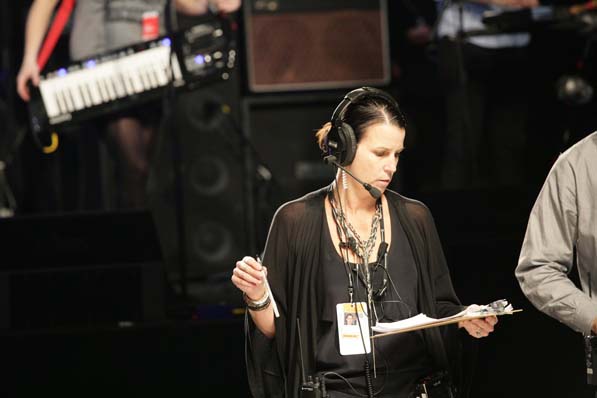
Though Kimberly O’Loughlin’s training as an engineer provided her the technical savvy for her future career, it was her master’s in psychology that put her at a level above her peers. By blending the sciences, she is able to more completely understand how users approach Vonage’s products.
Since Kimberly O’Loughlin joined Vonage, a leading provider of communications services worldwide, in 2009, the company has transformed into a thriving and profitable organization with increased customer loyalty, solid cash generation, and a strong balance sheet. It’s a true turnaround story—thanks, in part, to O’Loughlin, whose education and background help her to bridge technology and psychology, driving results. Here, she tells us how.
How did you get interested in technology and psychology?
O’Loughlin: I received a bachelor’s of science degree in electrical engineering and computer science from Princeton University. I considered many different jobs after graduation, but the one that struck me the most wasn’t designing operating systems or circuit boards; it was designing user interfaces. So I landed in the human-factors engineering department at AT&T. I was fascinated with the topic, and I decided to pursue a master’s degree in applied psychology with a concentration in human-factors engineering. Not many schools offer that, but Stevens Institute of Technology, which was local, did.
What exactly is human-factors engineering?
O’Loughlin: Human-factors engineering is all about the interaction of people with technology. You study things like sensation and perception (how you perceive the world), cognition (how your brain processes information), ergonomics (how you design products so they work with people). In my first job with AT&T, I was responsible for designing computer screens so it’s easy for people to interact with them.
If you can harness the collective power of the people you have at your disposal, you can really change the organization for the good.” —Kimberly O’Loughlin
How did you put that to use at AT&T?
O’Loughlin: My master’s thesis looked at the applied psychology of improving an operation. When I rotated into an operations job at AT&T and was responsible for running the company’s national network billing operations, I applied the organizational behavior concepts that I learned. It really gave me a passion for transforming organizations.
You didn’t stay in that position, though.
O’Loughlin: No, I had the opportunity to move around a lot within AT&T. I received advice early in my career from a mentor. He said that if you want to be a business executive, there are four key jobs you need to have: you have to have a job in which you are close to the customer; you have to have a job leading a large organization; you have to have a job managing profitability and growing revenue; and you have to have a job that broadens your global perspective. I took that advice to heart, and, fortunately, I could do it at AT&T. I led a large organization, grew revenue, managed product profitability, and improved sales and service.
Why did you leave AT&T?
O’Loughlin: AT&T was great to me, and I was there for 15 years. In 2000, the company spun off its wireless unit, and I was tapped to be a part of that organization. I helped form the wireless service multimedia data business unit. It was a blast. It was a start-up-like environment. We grew revenue from $40 million to $800 million in three years. When Cingular bought AT&T Wireless, I decided I wanted to try something new. I left the telecommunications industry and went to AIG to support the customer-care operations for all of the company’s business units. This role allowed me to broaden my knowledge and skills globally.
How did you end up at Vonage?
O’Loughlin: Working at AIG was terrific for several years. When everything started to change in the financial industry, I decided it was time to pursue a new position. I joined Vonage in 2009 as head of customer care. A month into it, I became responsible for managing churn and loyalty. Then, a year ago, our CEO asked me to manage our international expansion efforts. I’m now senior vice president of customer care and managing director of international markets.
What I’ve Learned
Lessons in
Customer Care
From Kimberly O’Loughlin
1.
“Broadening my experience made me a strong contributor regardless of my assignment.”
2.
“I see a lot of résumés of people who make moves in their careers, but you also have to deliver results in the assignments you’re in to really prove your worth.”
3.
“Effectively managing the talent in an organization is essential.”
What do you like most about the job?
O’Loughlin: I get really jazzed about delivering results. I love the caliber and talent of the people here, and working with them to transform and improve the business. We’ve had a great chance to do that over the past several years. That’s enabled Vonage to transform its business strategically, operationally, and financially. Now, we’re collectively working on the next chapter, which is all about revenue growth. That’s why I’ve picked up these additional responsibilities. Vonage is largely based out of the United States, with additional operations in Canada and the United Kingdom. Now we’re looking to expand globally.
How, exactly, do you deliver results?
O’Loughlin: The secret sauce in terms of delivering results is making sure you spend the time on what I call talent management. It becomes more important as you reach higher levels in an organization. If you can harness the collective power of the people you have at your disposal, you can really change the organization for the good, and when you do that, it’s easier to deliver results.
What do you consider your greatest professional achievement?
O’Loughlin: I’m really proud of Vonage’s turnaround over the past three years. My organization was a big part of that. When I arrived, the customer experience was not where it needed to be. Our cost structure was high, our processes were not as effective as they could have been, customers were leaving us, and there was improvement to be made on the employee-satisfaction front. Since then, we cut costs by nearly 50 percent, which helped the company improve earnings and refinance its debt. At the same time, we improved customer satisfaction to best-in-class performance levels, reduced customer churn by 100 basis points, and improved employee-satisfaction scores by more than 15 percent. That was really satisfying.

